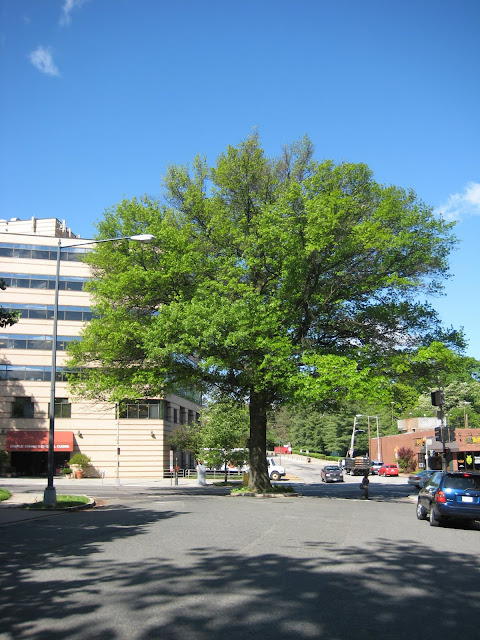Ongoing Series - Trees of Note

This Pin oak (Quercus palustris), located at the corner of Connecticut Avenue and Windom Place NW, is an incredible tree. Standing 65’ tall, 43” in diameter, it is truly an urban “arbor warrior.The area surrounding this tree completely paved or encased in concrete (with the exception of some garden beds across the street). Why it continues not just to survive, but remain in reasonable condition, is a biological miracle.
I love these trees best because they serve as sentinels of the past and hope for the future.This city was designed to support trees but population pressures have and will continue to assault that principle of urban design.
But no matter how strong urbanization’s pressures bear down on these trees with asphalt, new construction, power lines, street car lines and other infrastructure which compromise their health, these trees refuse to bend, they refuse to die. There’s power in these trees that transcend their beauty – they are in many ways emblematic of the thousands of volunteers at Casey Trees who every year plant trees, care for trees, and spread the word of the benefits of trees to all corners of the District.
We need more sentinels – both trees and people, to continue the fight so Washington DC will remain The City of Trees. If we do not, trees like my favorite Pin oak, which will eventually die and be removed, will never be replaced – and worse yet will be forgotten.
Our task is simple – never forget – never give up – continue the fight and continue to plant and advocate for trees in DC’s neighborhoods, parks, streets, and in unlikely places as well – places like this pin oak found 100 years ago, and still reminds us of its struggle today.
Visit this Tree of Note!
Connecticut Avenue and Windom Place NW
Washington DC
All Trees of Note can be found on the Casey Trees Map.
__________________________________________________
Pin oak 101:
- Location - native to eastern North America, mainly in the eastern United States from Connecticut west to eastern Kansas, and south to Georgia across to eastern Oklahoma.
- Crown - pyramidal; 25 - 40' spread
- Height - 60 -70'
- Foliage - deciduous; alternate; simple; 4 - 8" long blade
- Color - dark green leaves in spring/summer; russet, bronze or gold in fall
- Flower - brown, faded color; blooms in April/May
- Fruit - round; 1/2" long; features saucer-like cup of small, tight scales
- Bark - thin; furrowed
- Landscape use -great street tree; shade
Nominate a Tree of Note! All individuals that nominate a Tree of Note by Arbor Day on Friday, April 30, 2010 will be entered to win a signed copy of City of Trees by Melanie Choukas-Bradley. All Trees of Note can be found on the Casey Trees Map.
























